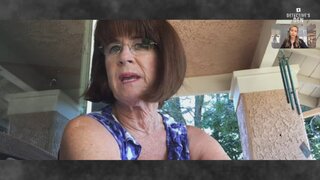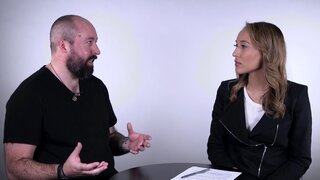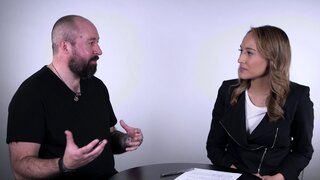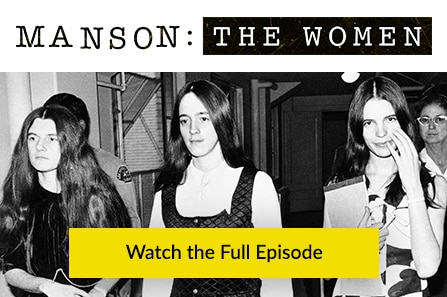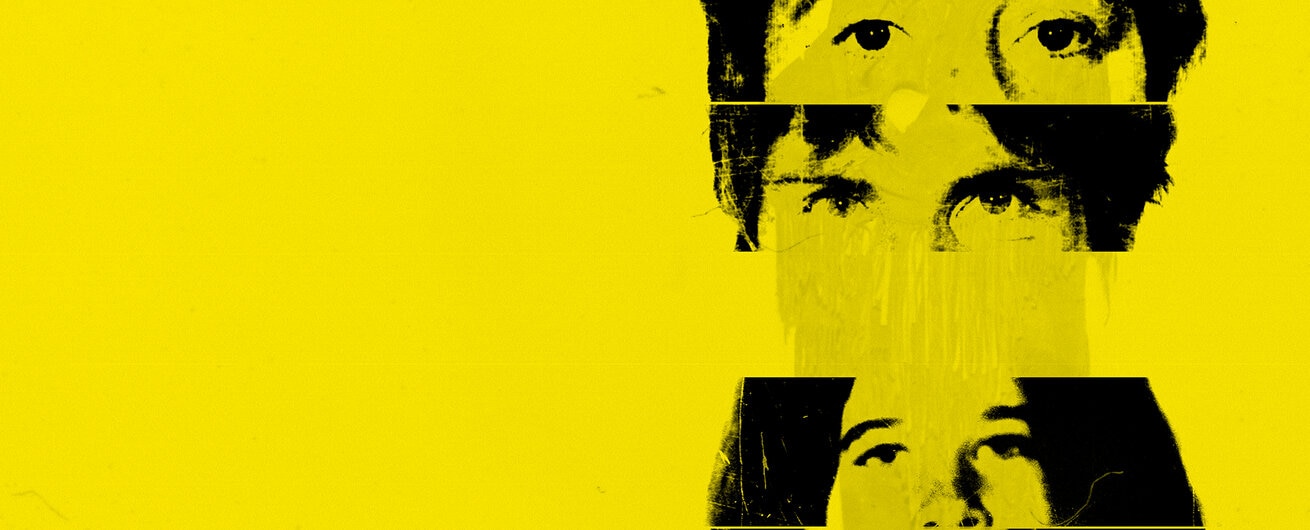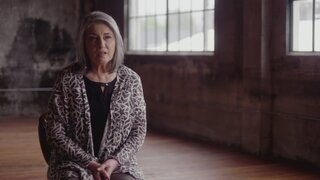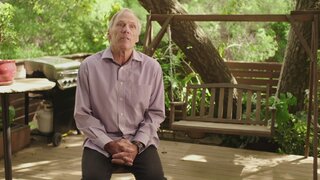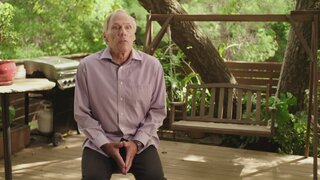Create a free profile to get unlimited access to exclusive videos, breaking news, sweepstakes, and more!
Why Dianne Lake Began To Separate Herself From The Manson Family
Dianne Lake once sought refuge with the family as a lonely 14-year-old—but would later become a star witness for the prosecution after often being the victim of Charles Manson’s rage.
Dianne Lake was just 14-years-old when she joined the Manson family and for a while it was an idyllic life—but a savage incident of violence at the hands of cult leader Charlie Manson would begin to separate her from the group she once considered family.
Lake, known in the group as “Snake,” would go on to serve as a star witness for the prosecution and helped put Manson, Charles “Tex” Watson and Manson’s female followers Susan Atkins, Patricia Krenwinkle and Leslie Van Houten behind bars for the heinous murders that terrorized Los Angeles in 1969.
Want more info on the infamous Manson Family? Get a free download of our exclusive Manson Family digital evidence kit when you join the Detective’s Den.
“I just felt like I needed to tell the truth,” she told “Manson: The Women,” an upcoming documentary airing on Oxygen of the decision to testify against the cult leader. “Those were horrendous crimes.”
An Early Safe Haven
But her time with the notorious cult began under much more innocuous circumstances. Even though she was in her early teens, Lake met Manson and the other women after she had already spent months on her own.
Her parents had decided to “drop out” the year before and were living at a commune known as the Hog Farm. Lake had joined them for a while, but she said the leaders at the commune were concerned because they felt the sexually active minor was “jail bait,” she told producers of “Manson: The Women.”
Her parents agreed to sign papers giving Lake emancipation and the young teen struck out on her own. She admits she was “totally looking for acceptance” the day she met Manson.
Lake told producers she met the group at a house and that Manson asked her to sit in a circle and join the rest of the family as he played guitar and the others sang along.
“That was my very first, you know, introduction to Charlie and the girls, and it was extremely loving, and I felt welcome,” she said.
That night she made love for the first time with the 34-year-old.
“He took me into the bus that night and made love to me…like I’d never experienced before,” she said, adding that it made her introduction to the group even “more special.”
Just a few weeks later she decided to join the group after feeling that “I belonged there more than I had any other place,” she said.
The early days with the family were filled with drugs, sex and a strong sense of comradery between the women.
“In the Mormon family, they call them sister wives. That’s kind of how we were,” Lake said. “It was amazing that there wasn’t any more competition among us; although, I remember thinking that I wanted Charlie to love only me and marry me.”
Manson’s Violent Rages
But while life on Spahn Ranch was in some ways a safe haven for the wandering teen—she often also found herself the subject of Manson’s violent outbursts.
“Those early days were probably very fulfilling and probably very loving, but they were also confusing because from the very beginning Manson couldn’t hide his dark side,” said Deborah Herman, who co-wrote the book with Lake called “Member of the Family: My Story of Charles Manson, Life Inside His Cult, and the Darkness That Ended the Sixties.”
“Diane would expect that she’s doing something nice and good and he would just haul off and hit her for no reason and then say ‘That’s your fault. You need a man to show you how to behave.’”
Herman went on to tell producers that she believed Lake may have often been a target of Manson’s anger because “a wolf will always go for the weakest animal in the herd,” but also said she doesn’t believe Lake was the only woman to glimpse Manson’s violent side.
Manson used violence, drugs and fear, she said, to “program people” and often relied on varying forms of abuse to manipulate the women in the group.
“One day he beat (Lake) with a cord in the kitchen for no reason and then would tell her, ‘It’s your fault,’” she said.
Lake herself believes she was often the target of Manson’s rage because she said she could be a “smartass” and didn’t always give Manson her complete attention.
“I didn’t lean on his every word,” she said. “Maybe because I’d been exposed to other communes.”
But it wasn’t until a particularly violent episode between Lake and Manson that Lake said she began to lose trust in the enigmatic leader.
She had wanted Manson to make love to her as he had in the past, but instead, he took her down the road to a “little gypsy caravan” and sodomized and raped her.
When he was finished, he told her, “That’s the way we do it in prison,” she said.
He left the young teen “in tears and bleeding” and the incident forever altered her view of him.
“That was the end,” she said, adding that she never pursued a physical relationship with him again.
“It was just really ugly,” she said. “It was a really ugly side of him.”
Investigators Raid The Compound
As time went on with the Manson Family, Lake said she also began to feel like she was no longer part of the group’s inner circle. As more guns and criminal activity become part of life at Spahn Ranch, Lake was sent off to the desert at Barker Ranch and also stayed for a time at Gary Hinman’s house—who would later be murdered by Manson followers after a drug deal gone bad.
“One side of me says, oh. He really loved me and he was protecting me. He wanted me to stay in the desert for my own safety,” Lake said of being kept away. “The other reality is that, no. I was a liability, and he wanted me as far away from this activity as possible.”
But, Lake eventually chose to return to the larger group even though it felt as though the “rocks and trees were crying out to me” to tell her she was making a mistake.
Lake was eventually arrested along with other family members during a raid at Barker Ranch after the infamous murders. Authorities at the time were unaware of the family’s connection to the Tate and LaBianca murders and believed the group had been stealing cars to turn them into dune buggies. But after two months in jail she told authorities her real name and age right before she was set to testify before a grand jury.
“It’s just me, and you know, the bailiff and the bailiff asks (my) name, so for the first time I say ‘Dianne Lake. I’m 16 and I want my mommy.’ And I did. I was scared,” she said. “I felt alone and so vulnerable.”
After learning Lake was a minor, she was transferred from jail to a psychiatric hospital, where she was able to get a new perspective on the cult and its influence.
“The mental health that I got in the hospital, I think, was extremely helpful,” she said.
Lake felt protected and had a psychiatrist and nurses to help her begin to heal.
“They taught me how to crochet. I learned how to play the flute,” she said.
After her stint at the hospital, Lake was taken in as a foster child by Detective Jack Gardiner, who had arrested the group. She credits Gardiner with giving her back her self-worth.
“I had a few months there where I was babysitting, and you know, I was having a normal kind of teenage experience,” she said.
Lake decided to testify against Manson and the followers, recounting how she woke up to find Leslie Van Houten burning items the day after the LaBianca murders.
She also recalled a later discussion with Watson where he held up a newspaper with the headline about the murders and claimed responsibility for the crimes.
It wasn’t until Lake took the stand and testified against Manson and the others that she said she finally felt the hold the charismatic leader had once held on her break.
“I didn’t want any part of it, and I just wanted to remove myself, and I felt like the best way I could do that was just to tell the truth,” she said of distancing herself from the group.
Lake admits she was “afraid” to take the stand and once again be in Manson’s presence, but said one of the first things they asked her on the stand was “Did you love him, or do you love him?”
When Lake told the court that she guessed she did, Manson blurted out “Don’t it all on Mr. Manson. She loved everybody,” she said.
“That’s when I realized that he was, you know, he was being a court jester,” she said, adding that it made her realize he no longer controlled her.
Years later, Lake said she now sees her time with the cult in a different light—and realizes she was often a victim to Manson’s abuse and manipulation.
“(It) took a lot of perspective,” she said. “At the time, I didn’t feel like a victim, but now, I understand I was.”
